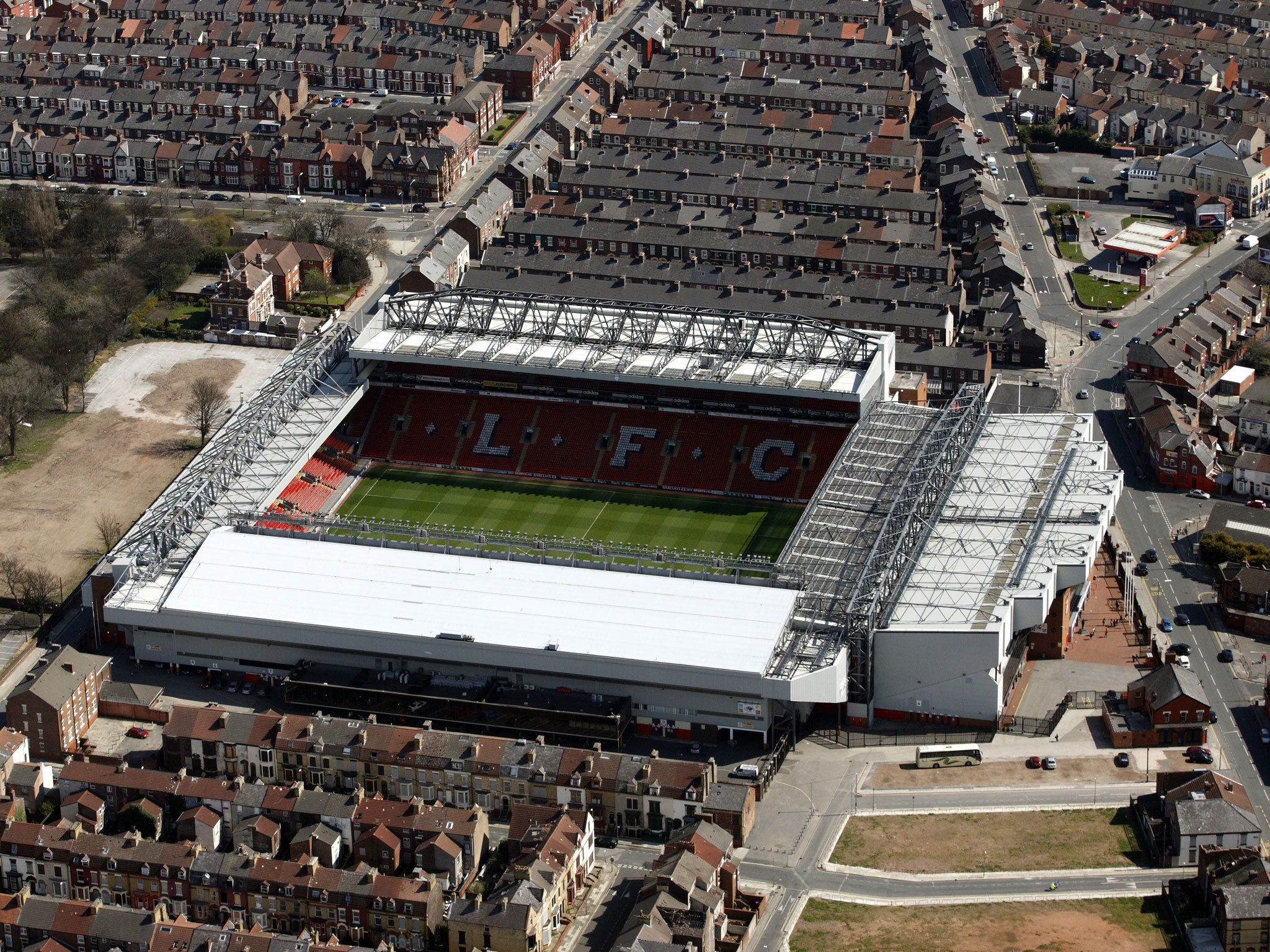Anfield expansion plans: Liverpool council paves way for stadium development
Club apologises to neighbours for years of housing blight in streets around the stadium

Your support helps us to tell the story
From reproductive rights to climate change to Big Tech, The Independent is on the ground when the story is developing. Whether it's investigating the financials of Elon Musk's pro-Trump PAC or producing our latest documentary, 'The A Word', which shines a light on the American women fighting for reproductive rights, we know how important it is to parse out the facts from the messaging.
At such a critical moment in US history, we need reporters on the ground. Your donation allows us to keep sending journalists to speak to both sides of the story.
The Independent is trusted by Americans across the entire political spectrum. And unlike many other quality news outlets, we choose not to lock Americans out of our reporting and analysis with paywalls. We believe quality journalism should be available to everyone, paid for by those who can afford it.
Your support makes all the difference.The Liverpool managing director, Ian Ayre, told the residents of Anfield that the club was sorry to be responsible for the neighbouring terraced streets falling into a state of deep decay, amid years of indecision over how the football club's stadium capacity would be expanded.
The state of the houses, scores of which have been bought up by the club and left empty ahead of a demolition that never came, has been little less than a disgrace at a time when Liverpool have paid players six-figure weekly salaries to grace their pitch. Ayre said he took "no pride in having to be responsible for the lack of progress over many years".
But Liverpool City Council revealed last night that it has left the club with no excuse for further delays, having now bought up all but eight of the 30 privately-owned houses needed to undertake a wholesale demolition and clear the way for the enlarged stadium which the club has said is its preferred way of expanding capacity.
The eight remaining properties – five of which are derelict – are in the ownership of four private landlords, who are holding out for the best price available. The Lothair Road, Anfield Road and Rockfield Road properties, each worth between £20,000 and £90,000, will if necessary be compulsorily purchased this summer by the council, which is simultaneously consulting locals on a £260m development which it hopes will revive one of the deepest scars on Liverpool's suburban landscape.
The purchase would pave the way for Liverpool to table plans for an expanded 60,000-capacity Anfield early next year – possibly by February. The expansion, which would include the development of the Main Stand and Anfield Road Stand, could conceivably be completed by 2016.
The council, which is seeking to drive the renewal of the area in a way that the club has failed to do, last night published development plans which included a hotel, new houses, shops, public spaces and offices as well as a wide thoroughfare sweeping past the expanded Anfield and through Stanley Park, which would be a "food hub" occupied by food production and retail outlets.
The development of the stadium remains integral to the new development, though Ayre was cautious last night about making cast-iron commitments to the expansion, despite the progress the council has made in bringing in funding partners and persuading the remaining home-owners to move out. "Just like any business, any investment we make has to be economically viable and sustainable over the long-term," Ayre told residents.
The stadium will need to become more active on non-match days to sustain the new economic activity the council envisages. Locating a training hotel and food hub in a district which has become as run-down as Anfield seems very ambitious, especially as the transport links between the city centre and the stadium remain so limited. Suggestions that nearby old rail lines be put back into use have been dismissed as they are the wrong gauge and would require a major engineering overhaul.
Join our commenting forum
Join thought-provoking conversations, follow other Independent readers and see their replies
Comments